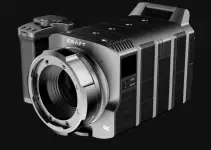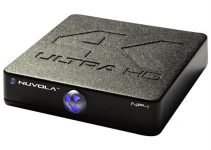Drone footage can add so much to your videos but simply throwing a drone in the air and hitting record won’t get the job done. Shots from a drone should have just as much thought put into them as any other type of camera. The movement of the drone and the composition of the shots are important considerations in making sure your drone shots are not ‘samey’ or boring.
One of the most popular drone shots is the ‘birds-eye’ or directly downward-facing shot. In this video, we get some great tips and tricks for spicing up this basic shot to help your edits stand out from the crowd.
Using top-down or birds-eye shots have become synonymous with drone cinematography and I love to use them myself. Here are some pointers from the video:
Keep the movement gentle – slow, steady movement will give you a nice, professional looking shot that you can play with in post-production.
Reveal your subject – Choose the final subject that you wish to reveal and find a way to keep it hidden during the camera movement.
Rule of 3rd’s – This is one of the most basic compositional tools in photography and it has become a standard part of the video shooters’ process. It is not the be-all and end-all of cinematography but can be a nice place to start.
Get Close – Getting the drone nice and close to the subject so the viewer can clearly see it can work well, but so can an extreme height.
All the above are nothing more than than pointers, ideas to try out in your own work. Perhaps fast movements and avoiding the rule of 3rd’s will work better for you. There is nothing worse than bland, by-the-numbers footage so experiment and find the style that works for you.
Here are some moves to try:
#1 The Rise
Pick your target and ascend slowly from it, directly upward with no rotation. This is a powerful shot for taking something small and setting it in a larger, sometimes unexpected context. It also feels something like a traditional jib or crane shot and this can add a higher level of production value to your video.
#2 Pass-By Reveal
Hide the target of your shot behind something eg a tree or building, and as you pass by or over it the target will be revealed. This can be a dramatic moment that surprises the audience. I would suggest that calling this shot a “pan” as per the video is incorrect, it’s really more of a dolly. In a pan, the camera turns from a fixed point, like sitting on a tripod. In a dolly, the camera moves which is really what’s happening here with the drone. Is this distinction important? No, so let’s move on.
#3 Corkscrew
This is where things start to get interesting. Rising or dropping onto a subject while rotating the drone creates a dynamic, visually amusing shot while revealing the subject in space. It can cause an odd, queasy feeling so take your time and try to keep it smooth and consistent. Tweaking your drone’s stick controls can help keep the movement solid and using built-in movement presets can make this a dawdle.
There are no rules for drone cinematography, aside from the flying regulations in your area, so experimenting and finding your own shots is part of the fun. Some of the best drone shooting I have seen comes from young YouTubers who have never been to film school and are learning as they go. The tips above are a good starting point but I would certainly suggest not thinking about what you should do and instead imagine what you could do!
[source: Jeff Greene]
B&H Order Links:
DJI Mavic 2 Pro with Fly More Combo Kit
Disclaimer: As an Amazon Associate partner and participant in B&H and Adorama Affiliate programmes, we earn a small comission from each purchase made through the affiliate links listed above at no additional cost to you.



